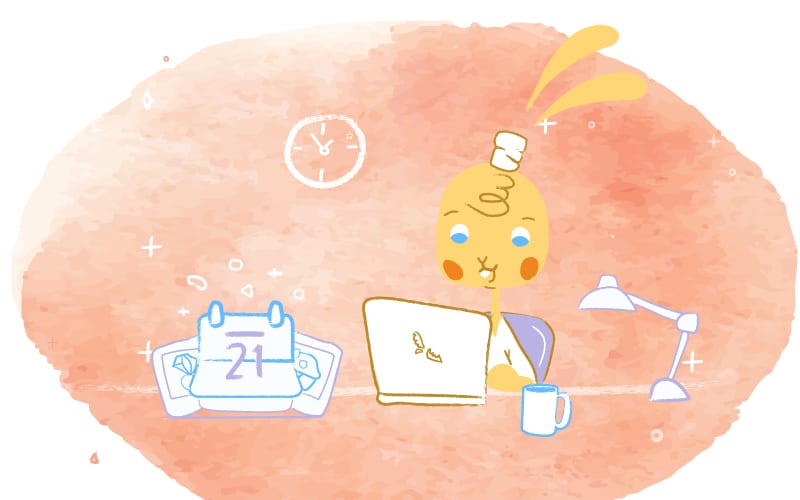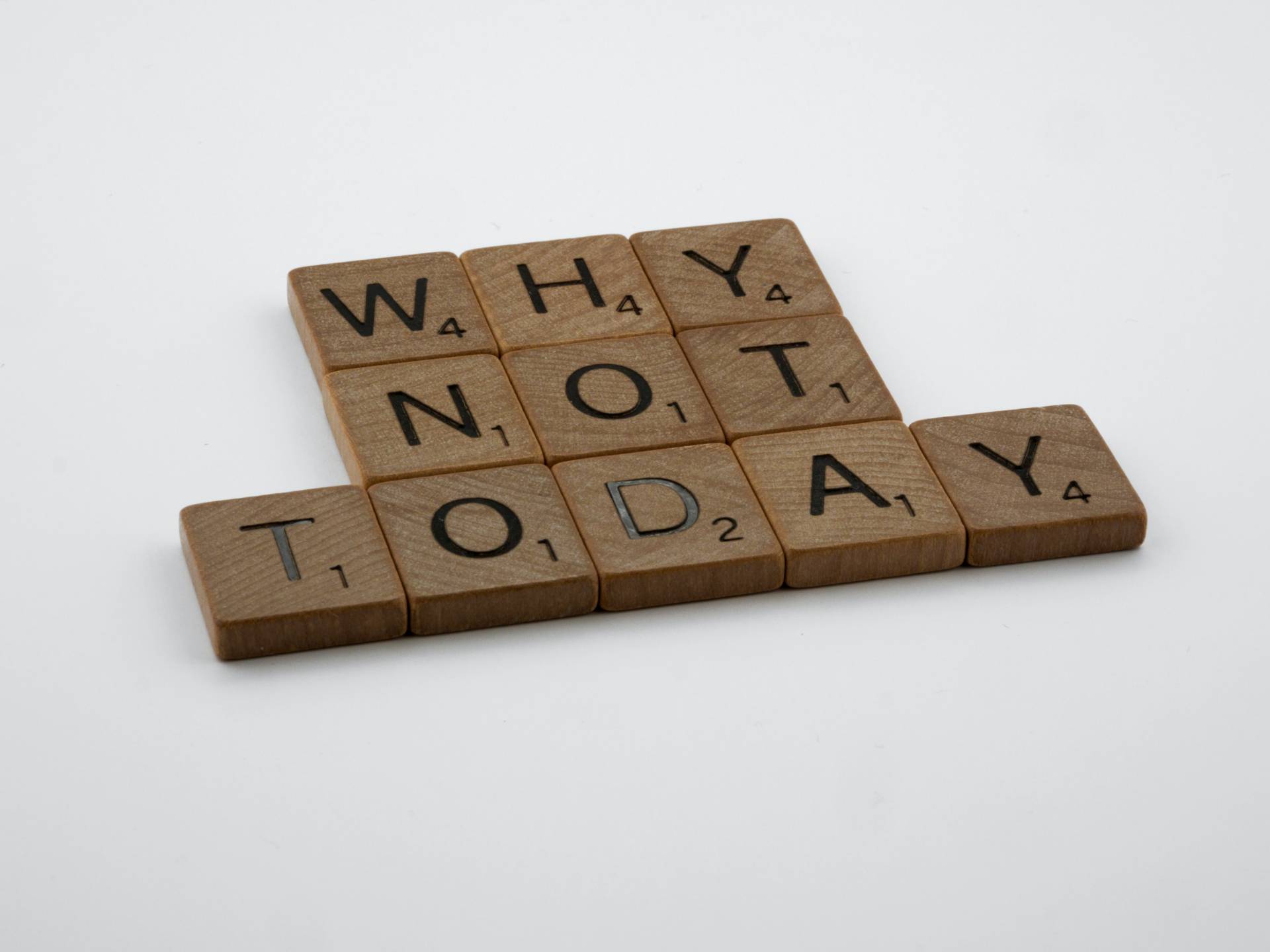

We all wish we could get more done in less time. The more productive we are, the more likely we are to receive that raise, the more personal time we’ll have, and the closer we’ll be to reaching our goals. At the same time, working harder won’t happen if you bully yourself. You can’t magically transform yourself into a task-executing, process-churning machine by flipping a switch.
You can, however, create a natural environment that encourages you to perform at your best by using various psychological tricks and games. In no particular order, these are the top ten:
1. Recognize that most of what you do doesn’t matter.
“If you take a look at what you have done in the last 40 hours of work, you’ll likely see that about 30 of those hours were spent on things that were either unplanned, unnecessary, or even downright unproductive,” writes Sean Mize for Lifehack. “And it’s not just the last 40 hours of your work life; it’s a week-in week-out problem.”
Regardless of whether you believe that is true for you, take the time to do a 15-minute interval diary for the next 40 hours. During each 15-minute period, record what you are working on. “Tally up all the periods at the end of the 40 hours,” he adds. “You will likely be amazed at the unproductive tasks you are engaging, even if you believe you are 80%+ productive right now.”
You might find that becoming more productive is not about adding something to your schedule. Instead, it would be best if you began by eliminating everything that isn’t necessary. You can easily add a few more hours by paring a 40-hour workweek to 10 hours.
When you pare down your 40-hour work week to 10 hours, you get twice as much done in half as much time, with half the stress, and with fewer chances of burnout, says Mize.
2. Organize your thoughts.
When a person’s mind is disorganized, their environment is usually disorganized as well… the reverse is also true. It’s easy to feel unproductive when all you see is the stack of unfinished tasks.
I’d suggest taking a deep breath if that’s where you’re starting. After all, you’re not going to get anywhere by just chugging along. So, in short, get your thoughts organized and clear your head first.
According to the National Council on Aging, mental disorganization creates more stress and impulsive behavior, which aren’t helpful for being productive. To organize your thoughts, take a moment to think, journal, pray, or meditate before starting your to-do list. Making a plan will be much easier if you organize your tasks with clarity and purpose.
3. Keep time intervals short.
For many of us, getting started is the most challenging part of any difficult task. You may waste time procrastinating if you know you have a massive project or a handful of tasks you dislike. Procrastination is a common problem among workers, with 88% of them procrastinating at least one hour a day.
Rather than committing to a three-hour project, commit to starting it for just five minutes instead. You will likely feel motivated to continue working on it after you have completed those five minutes.
4. Adapt your work environment to your needs.
Our work environment affects our productivity, even if we aren’t consciously aware of it. For instance, work productivity increases or decreases depending on the office temperature. Moreover, employees often make mistakes when the office is too cold.
It is also essential to select the correct bulb. In the long run, fluorescent lights, too-dim lights, and harsh lights are harmful to your eyes — and, as it turns out, your health. That’s why it’s best to work in a natural light area. Instead of fluorescent lights, use daylight bulbs if that’s not an option.
You might find that you get stuck in a creative rut if you work from a different location. Your brain becomes more creative when you change your surroundings, and you become more productive as a result. Researchers have found that our brain simply does not enjoy monotony and does better when the environment and task change.
5. Start with something easy.
Putting off the more complex, more significant tasks in favor of easy ones isn’t a good strategy for being more productive. On the contrary, a study from Emory University shows that people who tackle big tasks first are generally more effective in the long run.
In any case, if you’re trying to kickstart your productivity, start with something easy. You’ll feel accomplished and get just enough momentum to help you get going once you check a few things off your list.
Once you’ve experienced that rush of accomplishment, don’t linger on the easy stuff. Instead, do something significant with that energy.
6. Approach a task in useful, economical, and meaningful ways.
Decide whether you should do it yourself or offload it.
Do you do this yourself, or do you ask someone/something else to do it? “Offloading your work to something else or outsourcing can be cheap & efficient, but can often lead to a loss of control.” Aditya Shukla writes in Cognition Today. Implementing new systems, software, and people can take a long time. What do you do? Are you always a “Do It Yourself” (DIY) person? You can reduce your workload by offloading or outsourcing work, but if you’re uncomfortable with the process, it can also add to your stress level.
Let’s say your phone is glitching. “Would you rather spend a few hours, some money, and three working days on repairing your gadget OR spending 1 hour to figure out if you even need to go to the service store?” Shukla asks. There are many easy-to-implement solutions available on the internet. It is possible to save time by taking a DIY attitude. You can also use this attitude to gauge when you should avoid going DIY since it will highlight your limitations.
Are there any other problems related to productivity? For example, say you have a lot of writing to do and need proofreading. If Grammarly (a proofreader app) saves you three hours a week, is 8 dollars a month too much to pay? When this occurs, increasing productivity is a matter of judgment. Saving yourself the effort is worth it when it is critical.
To see the path, seek help and follow guides/walkthroughs.
Imagine you are stuck and unable to produce the results you need. Scaffolding might be necessary in that case. Often, we don’t know how to get from A to B. Scaffolding is a half-baked solution that assists you in getting from A to B. However, scaffolding only helps you get the job done in the first place. After that, the path to B is clear enough for you to follow.
A skill doesn’t have to be mastered before you can move on to ‘B.’ It just takes a bit of help from your brain to figure it out. A scaffolding method can be an effective tool for improving productivity. Scaffolding might become less necessary over time.
If your approach fails, change your perspective, plan, and priorities.
If your attempts fail repeatedly, you might need to adjust your perspective (psychological & physical). Rearrange priorities; rethink the plan. “Try to complete what you can readily complete first and then return to the difficult parts. You can work on a project linearly, go step by step, or in parallel; work on many fronts simultaneously,” suggests Shukla
As you work in parallel, you can see the whole picture forming over time rather than observing it piece by piece. Furthermore, working in parallel allows you to accomplish what you can at the earliest possible time. Despite its scattered appearance, it is much more streamlined. You gain an unfair advantage when you simultaneously see the more significant and smaller picture.
Don’t just focus on the outcome, but on the process as well.
Focusing on the process rather than the end result is helpful. Procrastination can be reduced by adopting a “process-focused” approach rather than an “outcome-focused” approach. If you focus on the process rather than the goal, you will procrastinate less. For example, if you study and absorb the material, you will procrastinate less. As a result, procrastination is the result of anxiety associated with task outcomes.
Process-focused individuals have less task aversion and less fear of failure. You can also manage time, stress, and milestones more effectively by focusing on the process.
Use proven methods instead of inefficient ones when tackling a task.
In some cases, it makes more sense to use a strategy designed for a particular type of task rather than your usual strategy. For example, most people continue to study according to their existing habits, but these habits are often inefficient.
7. Stay calm.
Staying calm may be the key to overcoming psychological fatigue at work. It’s scientifically proven that remaining calm over time reaps significant benefits.
In her book “The Happiness Track,” Stanford psychologist Emma Seppälä argues that happiness is a state of mind.
Physical exhaustion is usually associated with a lack of sleep, intense workouts, or a long day of physical labor, but Seppälä states that psychological fatigue can be just as exhausting. It can also lead to burnout, she says.
“Calm can even seem counterproductive,” Seppälä writes, adding that it “brings up images of passivity, laziness, lethargy or ineptitude.”
However, this is not the case, she writes. “Instead, being calm allows you to get your work done while spending less energy than you otherwise would,” according to Seppälä.
In Seppälä’s explanation, you can feel drained from working because of three psychological factors: high-intensity emotions, self-control, and negative thoughts.
You may feel excitement and joy during stressful or exciting times, such as meeting a deadline or getting an email notification. These emotions activate your sympathetic system, triggering a fight-or-flight reaction.
Furthermore, Seppälä says you mismanage your energy at work by exerting self-control, whether pushing yourself through a hard day or not complaining.
“You are basically wrestling with two impulses at once: you are focusing on your goal and what you want to accomplish, but at the same time you are hyper-aware of competing desires, thoughts and impulses,” Seppälä writes.
Thirdly, high-intensity negative thoughts contribute to your fatigue, including worrying and simply believing you’re tired.
In contrast, calmness requires less energy to maintain: Your heart does not beat faster than it should, your breathing remains regular, and your body feels relaxed. As a result of cultivating this sense of calm, she found that you will experience less stress, be able to focus more efficiently, and have a clearer mind.
Seppälä recommends the following methods to restore mental energy and remain calm:
- Take part in an activity that makes you feel good
- Become passionate about what you do
- Don’t forget the big picture
- Make gratitude a habit
- Don’t worry about work when you aren’t working
“You get the same amount of work done, but you remain balanced and enjoy the process,” Seppälä writes. “The best part, of course, is that your energy levels remain high because you are not as tired. As a result, you are happier and more successful.”
8. Do one thing at a time.
The more focused and efficient you are, the more productive you will be.
A multitasking strategy could make it easier to accomplish multiple tasks at the same time. Research suggests, however, that your brain does not manage multiple tasks nearly as well as you think it does. The truth is multitasking decreases your productivity by 40%.
It might seem like you are juggling multiple tasks at the same time. But, in reality, you’re quickly switching your attention and concentration from one thing to another. When you shift between tasks, it can be difficult to ignore distractions, resulting in mental blocks that can hinder your productivity.
However, by focusing on one thing at a time, your productivity will actually increase.
9. Be aware of your own and others’ boundaries.
Distractions are a regular part of today’s work environment. Our colleagues expect us to be always available due to open workplace designs and digital communication tools. Productivity can be severely affected by this constant availability, however.
According to a study conducted by the University of California, Irvine, even simple distractions can be costly. The study found that regaining focus after being distracted takes an average worker over 23 minutes.
Is there anything we can learn from this?
When it comes to being productive, minimizing distractions is key to maximizing focus. For that to happen, you have to establish some boundaries. Let your coworkers know when you’re unavailable by sharing your calendar, turning off notifications, logging out of social media, and logging out of your email.
You’ll be amazed at how much more you can accomplish if you do this for a week. In addition, when you take the time to unwind with your coworkers, you might also find you’re less stressed.
10. Accomplish significant tasks and reward yourself
There has been extensive research into the relationship between human productivity and the use of external rewards. Behavioral psychology’s operant conditioning principles state that rewards reinforce desirable behaviors by providing positive reinforcement.
In anticipation of your reward, you motivate yourself to work more productively after every significant task. In addition, it helps complete tasks that do not yield immediate results. For example, it is helpful to draft a proposal for a client who may or may not decide to retain your services.
It is possible to reward yourself in many ways, but make sure the reward has personal significance to you. For example, in terms of rewards, you could purchase a new gadget you have always wanted for yourself or get yourself a cup of coffee.
Image credit: Cottonbro Studio; Pexels; Thank you!











Deanna Ritchie
Editor-in-Chief at Calendar. Former Editor-in-Chief and writer at Startup Grind. Freelance editor at Entrepreneur.com. Deanna loves to help build startups, and guide them to discover the business value of their online content and social media marketing.